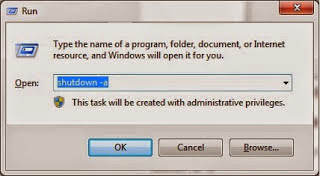Do you always forget to switch off your computer before going to bed, or just forget to look at the clock while you're working?
Open the Task Scheduler. This option is available in Windows 7 and Windows 8. In Windows 7, click Start → Control Panel → System and Security → Administrative Tools → Task Scheduler. In Windows 8, press the ⊞ Win key, type "schedule tasks", and select "Schedule tasks" from the search results.
Click "Create Basic Task". This option is available in the Actions menu on the right side of the window. You will need to give the task a name and description. Name it something easy to remember, such as "Shutdown Timer". Click Next > to continue.
Choose the frequency. Select the "Daily" option on the "Task Trigger" page and click Next >. Choose the time you want your computer to shut down each night. Leave the "Recur ever: X days" setting to "1". Click Next >.
Choose "Start a program". This option will be on the "Action" screen and should be automatically selected. Click the Next > button to proceed.
Enter the location for the shutdown program. When Windows shuts down, it actually runs a shutdown program. In the "Program/script" field, type C:\Windows\System32\shutdown.exe.
Open notepad by going to Start> All Programmes> Accessories> Notepad. Or, you can just type "notepad", without quotes, into the start menu and hit enter.
Copy the following code:
Go to File> Save As.
Double click the file. A blank command prompt screen should appear.
Leave this window open while you do your work.
When the time you specified in step 3 comes around, your computer should display a message for one minute, then shut down.
If you wish to abort the shutdown, press the Windows Key (the key with the Microsoft logo on it) + R.
Type "shutdown -a", without quotes into the window that appears and hit Enter. A Command Prompt window should appear, then disappear. A balloon similar to this one should appear.

Open the Task Scheduler. This option is available in Windows 7 and Windows 8. In Windows 7, click Start → Control Panel → System and Security → Administrative Tools → Task Scheduler. In Windows 8, press the ⊞ Win key, type "schedule tasks", and select "Schedule tasks" from the search results.
Click "Create Basic Task". This option is available in the Actions menu on the right side of the window. You will need to give the task a name and description. Name it something easy to remember, such as "Shutdown Timer". Click Next > to continue.
Choose the frequency. Select the "Daily" option on the "Task Trigger" page and click Next >. Choose the time you want your computer to shut down each night. Leave the "Recur ever: X days" setting to "1". Click Next >.
Choose "Start a program". This option will be on the "Action" screen and should be automatically selected. Click the Next > button to proceed.
Enter the location for the shutdown program. When Windows shuts down, it actually runs a shutdown program. In the "Program/script" field, type C:\Windows\System32\shutdown.exe.
- In the "Arguments" filed, type /s. Click Next >.
Open notepad by going to Start> All Programmes> Accessories> Notepad. Or, you can just type "notepad", without quotes, into the start menu and hit enter.
Copy the following code:
- @echo off
- :W
- if %time%==00:00:00.00 goto :X
- goto :W
- :X
- shutdown.exe /s /f /t 60 /c "Go to bed!!!!!!"
- This constantly checks the time to see if it is midnight and, if it is, it shuts down the computer with the message "Go to bed!!!!"
Go to File> Save As.
- Change the "Save as type" box to "All Files"
Double click the file. A blank command prompt screen should appear.
Leave this window open while you do your work.
When the time you specified in step 3 comes around, your computer should display a message for one minute, then shut down.
If you wish to abort the shutdown, press the Windows Key (the key with the Microsoft logo on it) + R.
Type "shutdown -a", without quotes into the window that appears and hit Enter. A Command Prompt window should appear, then disappear. A balloon similar to this one should appear.
No comments:
Post a Comment